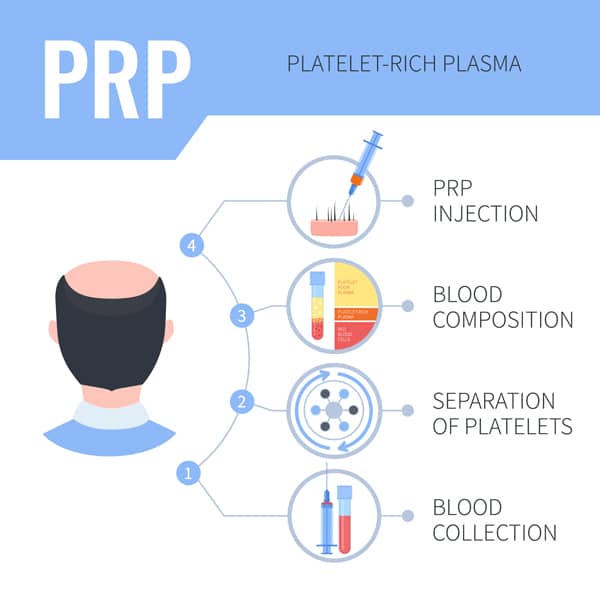Hair loss is a common concern that affects millions of people worldwide. Finding the right treatment can be challenging, with various factors contributing to hair loss, including genetics, hormones, stress, and medical conditions. In this comprehensive blog post, we’ll explore the medical hair loss treatments available, focusing on Fotona Laser and PRP therapy, to help you make informed decisions about your hair restoration journey.
Understanding Hair Loss
Hair loss occurs when the natural cycle of hair growth is disrupted, or hair follicles are damaged. The most common type of hair loss is androgenetic alopecia (male or female pattern baldness), caused by genetics and hormonal factors. Other types of hair loss include:
- Telogen effluvium: Temporary hair loss due to stress, illness, or hormonal changes.
- Alopecia areata: An autoimmune disorder that causes patchy hair loss.
- Traction alopecia: Hair loss caused by tight hairstyles or hair pulling.
- Cicatricial (scarring) alopecia: Hair loss due to scarring from inflammation or injury.
Medical Hair Loss Treatments
Various medical hair loss treatments are available, ranging from topical solutions and oral medications to minimally invasive procedures and surgical interventions. Let’s discuss some popular options, including Fotona Laser and PRP therapy.
- Minoxidil: A topical solution applied to the scalp to stimulate hair growth, minoxidil is FDA-approved for treating androgenetic alopecia in both men and women.
- Finasteride: An oral medication that blocks the production of dihydrotestosterone (DHT), a hormone that contributes to hair loss. Finasteride is FDA-approved for treating male pattern baldness.
- Fotona Laser: Fotona’s laser technology offers a non-invasive, painless solution for hair loss. The laser stimulates blood circulation and hair follicle activity, promoting hair growth and reducing hair shedding. Key benefits of Fotona Laser include:
- Suitable for various hair loss types: Effective in treating androgenetic alopecia, telogen effluvium, and other hair loss conditions.
- Quick and painless: Treatments typically last 20-30 minutes without downtime or discomfort.
- No side effects: Unlike some medications, Fotona Laser treatment has no known side effects.
- Complementary to other treatments: To optimize results, Fotona Laser can be combined with other hair restoration treatments, such as PRP therapy or minoxidil.
Platelet-Rich Plasma (PRP) therapy
PRP therapy involves extracting a small amount of blood from the patient, which is then processed to separate the platelet-rich plasma from the other components. Platelets are specialized blood cells that contain growth factors and proteins that play a crucial role in the body’s natural healing process. When concentrated and injected into the scalp, these growth factors stimulate hair growth and improve hair density.
The procedure typically involves the following steps:
- Blood collection: A healthcare professional will draw a small amount of blood from the patient, usually from the arm.
- Centrifugation: The blood sample is placed in a centrifuge, which separates the platelet-rich plasma from other blood components, such as red and white blood cells.
- Activation: Some clinicians may choose to activate the PRP by adding calcium chloride or another activator, potentially enhancing the release of growth factors.
- Injection: Using a fine needle, the PRP is then carefully injected into the areas of the scalp where hair loss or thinning has occurred.

The entire PRP therapy process typically takes about an hour, and patients can generally return to their normal activities immediately after the treatment.
Results from PRP therapy can vary from person to person, and multiple sessions may be necessary to achieve optimal results. It is important to note that PRP therapy is not a permanent cure for hair loss, and maintenance treatments may be required to sustain the results.
PRP therapy is considered safe when performed by a qualified professional, but there are some potential side effects, including:
- Infection
- Bleeding
- Swelling
- Pain or discomfort at the injection site
It is important to discuss PRP therapy with a healthcare professional to determine if it is an appropriate treatment option based on individual needs and medical history. While PRP therapy has shown promise for hair regrowth, more research is needed to fully understand its effectiveness and long-term results.

